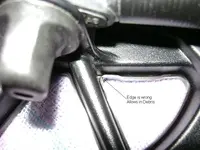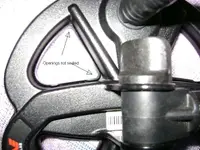- Joined
- Jan 5, 2019
- Messages
- 775
- Reaction score
- 1,769
- Golden Thread
- 0
- Primary Interest:
- Metal Detecting
- #1
Thread Owner
Since I've been out a few times now with my Equinox what I notice is a lot of dried grass, dirt, and other gunk gets under the coil cover.
I've had my coil cover off about 4 times now cleaning under it. What I've noticed is that the coil cover does not seem to fit that great. Has anyone else noticed this with their Equinox coil covers?
I've made sure it snaps on properly at all points, but things still get under there. I've also noticed on my stock coil the epoxy doesn't seem to be all the way throughout underneath. Probably nothing but had to mention that too.
So far what I've been doing is after every 2 hunts with it, remove the cover and take a damp paper towel to clean the bottom of the coil, the sides, and the inside of the coil cover. I realize after time this is going to make it even weaker. So if anyone has an idea on how to better seal up that coil cover without hurting anything I would be interested to hear it.
I've had my coil cover off about 4 times now cleaning under it. What I've noticed is that the coil cover does not seem to fit that great. Has anyone else noticed this with their Equinox coil covers?
I've made sure it snaps on properly at all points, but things still get under there. I've also noticed on my stock coil the epoxy doesn't seem to be all the way throughout underneath. Probably nothing but had to mention that too.
So far what I've been doing is after every 2 hunts with it, remove the cover and take a damp paper towel to clean the bottom of the coil, the sides, and the inside of the coil cover. I realize after time this is going to make it even weaker. So if anyone has an idea on how to better seal up that coil cover without hurting anything I would be interested to hear it.






